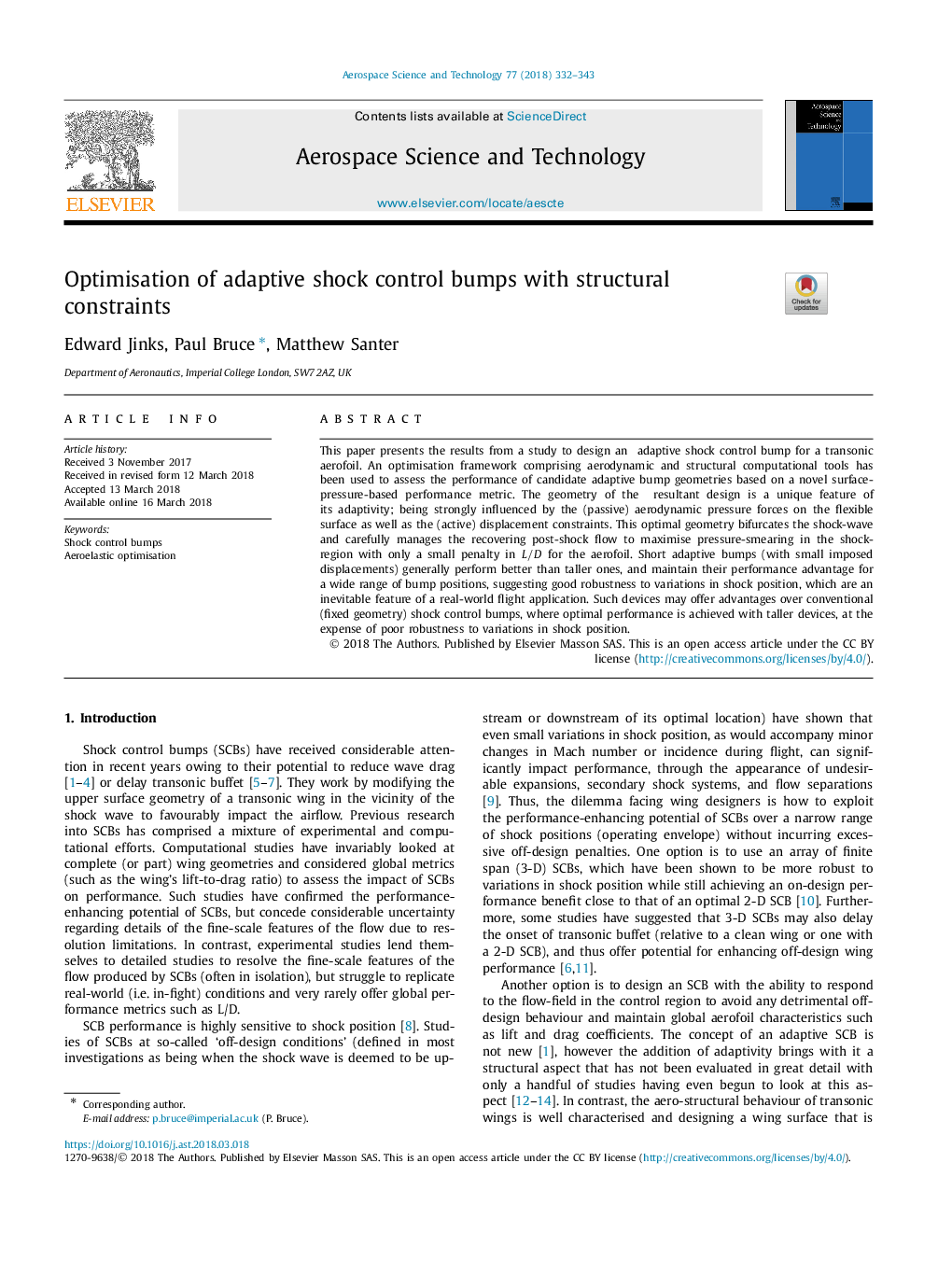| Article ID | Journal | Published Year | Pages | File Type |
|---|---|---|---|---|
| 8057670 | Aerospace Science and Technology | 2018 | 12 Pages |
Abstract
This paper presents the results from a study to design an adaptive shock control bump for a transonic aerofoil. An optimisation framework comprising aerodynamic and structural computational tools has been used to assess the performance of candidate adaptive bump geometries based on a novel surface-pressure-based performance metric. The geometry of the resultant design is a unique feature of its adaptivity; being strongly influenced by the (passive) aerodynamic pressure forces on the flexible surface as well as the (active) displacement constraints. This optimal geometry bifurcates the shock-wave and carefully manages the recovering post-shock flow to maximise pressure-smearing in the shock-region with only a small penalty in L/D for the aerofoil. Short adaptive bumps (with small imposed displacements) generally perform better than taller ones, and maintain their performance advantage for a wide range of bump positions, suggesting good robustness to variations in shock position, which are an inevitable feature of a real-world flight application. Such devices may offer advantages over conventional (fixed geometry) shock control bumps, where optimal performance is achieved with taller devices, at the expense of poor robustness to variations in shock position.
Related Topics
Physical Sciences and Engineering
Engineering
Aerospace Engineering
Authors
Edward Jinks, Paul Bruce, Matthew Santer,
